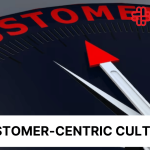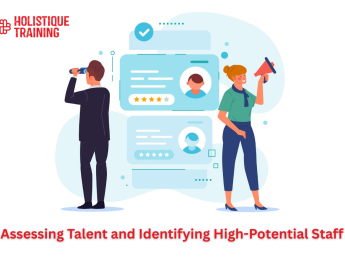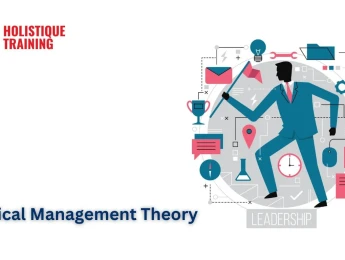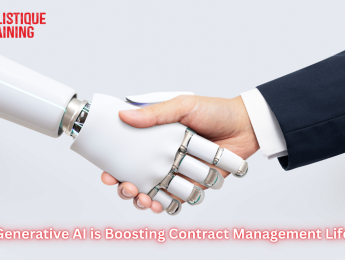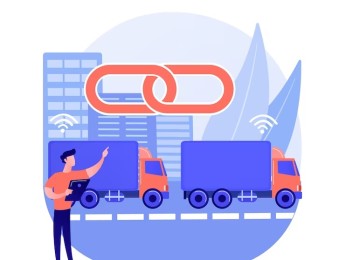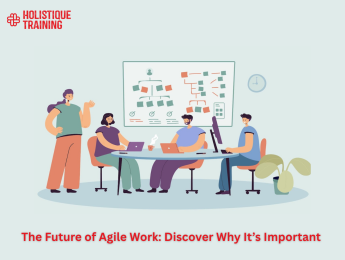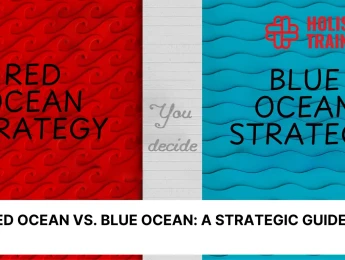- Table of Contents
- Introduction
- What Is Customer Success?
- Customer Success & Customer Service: What's the Difference?
- What Are the Key Foundations of Customer Success?
- 1- Customer-Centric Culture
- 2- Data-Driven Insights
- 3- Clear Customer Success Goals
- 4- Effective Communication
- 5- Ongoing Training and Development
- How Does Prioritising Customer Success Impact Employees?
- Employee Engagement and Satisfaction
- Cross-Functional Collaboration
- Adaptability and Continuous Learning
- Recognition of Employee Contributions
- Alignment with Organisational Values
- Increased Job Fulfilment
- Challenges in Managing Workload
- Need for Skill Diversification
- Impact on Leadership Styles
- Employee Advocacy
- 8 Ways to Leverage Customer Success in Your Business
- 1- Adopt a Proactive Customer Onboarding Process
- 2- Implement Customer Success Reviews
- 3- Personalise Customer Interactions
- 4- Leverage Technology to Scale Customer Success Efforts
- 5- Reward Customer Loyalty and Advocacy
- 6. Provide Continuous Education Resources
- 7. Facilitate Community Engagement
- 8. Invest in Predictive Analytics
- Challenges of Making Customer Success a Priority
- 1. Organisational Resistance to Change
- 2. Limited Resources and Budget Constraints
- 3. Defining Clear and Measurable Goals
- 4. Balancing Automation and Personalisation
- 5. Scaling Customer Success Efforts
- 6. Demonstrating Tangible ROI
- Conclusion
Introduction
Customer success has emerged as a fundamental pillar in modern business strategies, reshaping how companies engage with their customers and deliver value. Moving beyond mere customer satisfaction, the concept of customer success prioritises the achievement of customer goals through proactive support and personalised interactions. In this blog post, we will delve into the essence of customer success, differentiate it from customer service, establish the crucial foundations it requires, and finally, explore five effective strategies to make it the cornerstone of your business growth.
What Is Customer Success?
Customer success can be defined as the proactive approach of assisting customers in achieving their objectives while using your products or services. Rather than just focusing on resolving issues and addressing complaints, customer success aims to foster a collaborative and supportive relationship with customers throughout their entire journey. The core objective of customer success is to drive value for customers, leading to increased loyalty, retention, and ultimately, business growth.
Customer Success & Customer Service: What's the Difference?
Customer success andcustomer service are closely related concepts, but they differ in their fundamental approaches and goals. Customer service typically deals with reactive responses to customer inquiries, complaints, and support requests. It aims to address issues and fix problems to ensure customer satisfaction.
On the other hand, customer success takes a proactive approach, focusing on preventing problems before they arise and enabling customers to maximise the value of their purchases. It involves understanding the customer's needs, aligning their goals with your products or services, and providing continuous guidance and support to ensure they achieve success.
What Are the Key Foundations of Customer Success?
To truly make customer success a top priority in your business, you must establish a solid foundation that supports its implementation across the organisation. These key foundations form the bedrock upon which successful customer-centric strategies are built. Let's delve deeper into each of these essential elements:
1- Customer-Centric Culture
At the heart of customer success lies acustomer-centric culture that permeates every level of your organisation. This culture starts with leadership setting a clear example and demonstrating a genuine commitment to putting customers first. Encourage and empower all employees to prioritise customer needs and outcomes in their decision-making processes.
Fostering a customer-centric culture involves cultivating empathy for customers and developing a deep understanding of their pain points, goals, and aspirations. Create opportunities for cross-functional teams to engage directly with customers, whether through regular meetings, focus groups, or customer feedback sessions. By building empathy and a shared sense of purpose, your teams will be better equipped to deliver personalised and valuable experiences to customers.
2- Data-Driven Insights
Data is a goldmine of information that can shape your customer success strategies. Leverage data analytics to gain valuable insights into customer behaviour, preferences, and interactions with your product or service. By analysing this data, you can identify patterns, trends, and areas where customers may be facing challenges.
For example, through data analysis, you may discover that a certain feature of your product is under utilised by most customers, indicating a need for additional training or user-guides. Or you may find that a specific customer segment is more likely to churn, signalling the need for personalised interventions to retain them.
3- Clear Customer Success Goals
Establishing clear and measurable customer success goals is essential for guiding your efforts and evaluating your progress. These goals should align with your overall business objectives and reflect the desired outcomes your customers seek when using your product or service.
For instance, your customer success goals might include increasing customer retention rates by a certain percentage, reducing the time it takes for customers to achieve their first success milestone, or boosting customer satisfaction scores. Ensure that these goals are specific, achievable, and time-bound, providing a sense of direction and purpose for your customer success team.
4- Effective Communication
Effective communication lies at the core of building strong relationships with customers. Establish clear and open channels of communication, ensuring that customers can easily reach out for support or share feedback.
Regularly engage with customers through personalised interactions, whether via email, phone calls, or virtual meetings. Take the time to actively listen to their needs and concerns, and provide prompt and meaningful responses. By demonstrating a genuine interest in their success, you will earn their trust and loyalty.
5- Ongoing Training and Development
Your customer success team is the frontline in ensuring customers achieve their goals. Invest in their training and development to equip them with the knowledge, skills, and tools they need to excel in their roles.
Provide comprehensive training on your product or service, as well as soft skills training in communication,problem-solving, and relationship-building. Encourage continuous learning and stay up-to-date with industry trends and best practices. A well-trained and motivated customer success team will be better equipped to offer proactive and effective support to your customers, driving their success and satisfaction.
By building these key foundations, you lay the groundwork for a successful customer success strategy that drives value for your customers and accelerates your business growth. Remember, customer success is not a one-time effort but a continuous journey that requires dedication and commitment from every level of your organisation.
How Does Prioritising Customer Success Impact Employees?
Making customers a top priority doesn't only influence external interactions but has a profound impact on the internal dynamics of an organisation. Employees, from leadership to frontline staff, are integral to the success of customer-centric initiatives. Here's a glimpse into how prioritising customer success can affect the workforce:
Employee Engagement and Satisfaction
Prioritising customer success often entails a shift towards a customer-centric culture. When employees witness a genuine commitment to customer satisfaction, it can boost their sense of purpose and engagement. Knowing that their efforts contribute to positive customer experiences fosters a sense of pride and job satisfaction.
Cross-Functional Collaboration
Customer success initiatives require collaboration across various departments, breaking down silos that may have existed. Employees from different functions, such as marketing, sales, and support, may find themselves working more closely to ensure a seamless customer journey. This cross-functional collaboration not only benefits customers but also enhances the overall workplace dynamic.
Adaptability and Continuous Learning
The emphasis on customer success often necessitates a culture of adaptability and continuous learning. Employees must stay informed about evolving customer needs, industry trends, and the latest technologies. This commitment to ongoing education can lead to a more dynamic and innovative workforce.
Recognition of Employee Contributions
As organisations prioritise customer success, there's an increased awareness of the vital role employees play in achieving these goals. Recognising and appreciating employees for their contributions to customer satisfaction becomes a key aspect of the organisational culture. This recognition can serve as a powerful motivator for continued dedication to customer-centric initiatives.
Alignment with Organisational Values
Prioritising customer success often aligns with broader organisational values centred around integrity, transparency, and a commitment to excellence. Employees who resonate with these values may feel a stronger connection to the company's mission and vision, reinforcing a sense of shared purpose.
Increased Job Fulfilment
Employees who see the positive impact of their work on customer success may experience a heightened sense of job fulfilment. Knowing that they are not just completing tasks but actively contributing to the success and satisfaction of customers can create a more fulfilling work environment.
Challenges in Managing Workload
While the commitment to customer success is admirable, it may introduce challenges related to workload management. Employees, especially those directly involved in customer interactions, may need to balance personalised customer engagement with efficient task management. Striking the right balance becomes crucial for sustaining both employee well-being and customer satisfaction.
Need for Skill Diversification
The evolving landscape of customer success may require employees to diversify their skill sets. This could involve developing not only technical skills but also soft skills such as empathy, communication, and problem-solving. Employees who embrace this need for skill diversification can thrive in an environment that values adaptability.
Impact on Leadership Styles
Leadership styles may undergo adjustments as organisations prioritise customer success. Leaders may find themselves focusing more on servant leadership, where their role involves supporting and enabling employees to deliver exceptional customer experiences. This shift in leadership style can contribute to a more collaborative and empowering workplace culture.
Employee Advocacy
Employees who witness the positive outcomes of customer success initiatives may become natural advocates for the organisation. A satisfied and engaged workforce can contribute to positive word-of-mouth marketing, both internally and externally, attracting top talent and fostering a positive brand image.
As organisations embark on the journey of prioritising customer success, it's essential to recognise the intricate interplay between employee satisfaction and customer satisfaction. Balancing the needs of both customers and employees is key to building a resilient and customer-centric organisational culture. The impact on employees is not only a reflection of the organisation's commitment to customers but also a testament to the shared success of both customers and those dedicated to serving them.
8 Ways to Leverage Customer Success in Your Business
Now that we understand the importance of customer success and the key foundations for its implementation, let's explore eight actionable ways to make customer success a top priority in your business.
1- Adopt a Proactive Customer Onboarding Process
The customer onboarding process is crucial in setting the tone for the entire customer journey. Instead of leaving customers to figure things out on their own, create a structured onboarding programme that guides them through the initial stages of product adoption. Offer personalised onboarding sessions, tutorials, and resources to help customers understand how to use your product effectively to achieve their goals.
During onboarding, actively listen to their needs and provide tailored solutions. Remember, a successful onboarding experience builds trust and confidence, setting the stage for a long-lasting relationship.
2- Implement Customer Success Reviews
Customer success reviews are periodic check-ins with your customers to assess their progress, address challenges, and identify opportunities for improvement. These reviews provide valuable feedback and insights into how your product or service is performing for each customer.
Encourage an open and honest conversation during these reviews, and actively seek suggestions for enhancement. These interactions not only strengthen the relationship with customers but also demonstrate your commitment to their success.
3- Personalise Customer Interactions
Every customer is unique, and treating them as such can significantly impact their experience. Personalisation goes beyond using a customer's name; it involves understanding their preferences, pain points, and goals. Leverage the data you've gathered to tailor your communication, product recommendations, and support to each customer's specific needs.
By providing personalised experiences, you make your customers feel valued, enhancing their loyalty and advocacy for your brand.
4- Leverage Technology to Scale Customer Success Efforts
While personalised interactions are crucial, as your customer base grows, manual efforts may become challenging to sustain. Leverage technology such as customer relationship management systems, automation tools, and analytics software to scale your customer success efforts effectively.
Automation can help streamline routine tasks, allowing your team to focus on high-touch interactions and strategic initiatives. CRM systems and analytics tools enable you to gain deeper insights into customer behaviour, allowing for more informed decision-making and targeted interventions.
5- Reward Customer Loyalty and Advocacy
Recognising and rewarding customer loyalty and advocacy can foster a strong sense of community around your brand. Implement loyalty programmes that offer exclusive benefits, discounts, or access to new features for long-term customers. Encourage customer advocacy by establishing referral programmes that incentivise existing customers to refer new ones.
Happy customers who feel appreciated are more likely to stay loyal and become enthusiastic brand ambassadors, contributing to positive word-of-mouth marketing.
6. Provide Continuous Education Resources
Recentstudies indicate that brands offering educational content are 131% more likely to attract customers for purchase. Crazy, right? That’s why you should empower your customers with the knowledge they need to make the most out of your product or service by offering continuous education resources. This can include comprehensive documentation, video tutorials, webinars, ebooks, and online courses.
Ensure that these resources are easily accessible and regularly updated to keep pace with product updates and industry trends. By enabling your customers to become experts in using your offerings, you not only enhance their overall experience but also reduce the likelihood of issues arising due to misunderstandings or lack of knowledge.
7. Facilitate Community Engagement
Create a community platform where your customers can connect, share experiences, and seek advice from each other. This sense of community fosters a deeper connection with your brand and allows customers to learn from real-world scenarios. According to a study from the Aberdeen Group, as cited by a LinkedIn article, organisations fostering engaged communities witness a notable 47% boost in customer satisfaction levels.
Active participation in a community can lead to a sense of ownership and belonging, making customers more likely to stay loyal and advocate for your brand. It also provides a valuable feedback loop, allowing you to understand your customers' needs and sentiments directly from the source.
8. Invest in Predictive Analytics
Harness the power of predictive analytics to anticipate customer needs and proactively address potential issues. By analysing historical data and patterns, predictive analytics can help you identify trends, foresee churn risks, and suggest personalised interventions.
For instance, if certain usage patterns often precede customer dissatisfaction, you can intervene before issues escalate. This forward-looking approach adds a layer of foresight to your customer success strategy, enabling you to stay one step ahead and deliver preemptive solutions.
Challenges of Making Customer Success a Priority
While the concept of customer success holds immense potential for businesses, it is not without its challenges. Implementing a customer success strategy requires dedication, resources, and a proactive organisational mindset. Let’s explore the key challenges that businesses may encounter as they strive to make customer success a top priority:
1. Organisational Resistance to Change
One of the primary challenges in prioritising customer success is overcoming resistance to change within the organisation. Shifting towards a customer-centric culture often requires a significant mindset shift at all levels, from leadership to frontline employees. Resistance may arise from established processes, ingrained habits, or a lack of understanding about the long-term benefits of prioritising customer success.
Leadership plays a crucial role in driving this cultural shift. Providing clear communication about the benefits, fostering a sense of ownership among employees, and incorporating customer success goals into key performance indicators can help overcome resistance. Training programs and workshops that emphasise the importance of customer success can also contribute to a smoother transition.
Table 1: Key Performance Indicators (KPIs) of Customer Success
KPI | Description | Measurement Frequency |
Customer Retention Rate | Percentage of customers retained over a period | Monthly, Quarterly |
Customer Lifetime Value (CLV) | Predicted revenue from a customer throughout engagement | Annually, Bi-annually |
Net Promoter Score (NPS) | Measure of customer satisfaction and loyalty | Periodic Surveys (Quarterly, Semi-annually) |
Churn Rate | Percentage of customers who cease subscriptions | Monthly, Annually |
Expansion Revenue | Revenue generated from existing customers upsells | Quarterly, Bi-annually |
2. Limited Resources and Budget Constraints
Allocating resources, both in terms of personnel and finances, is a common challenge for businesses aiming to prioritise customer success. Building a robust customer success team, investing in training programs, and implementing advanced technologies can strain budgets, especially for smaller or budget-conscious organisations.
While resources may be limited, strategic allocation is key. Prioritise initiatives that offer the most significant impact on customer success. Leveraging technology, such as cost-effective customer relationship management (CRM) systems, can streamline processes. Cross-functional collaboration within the organisation ensures that various departments contribute to the customer success initiative.
3. Defining Clear and Measurable Goals
Establishing clear and measurable customer success goals is essential, but defining these goals can be challenging. Ambiguous or unrealistic objectives can hinder progress and make it difficult to evaluate the effectiveness of the customer success strategy.
Take the time to align customer success goals with broader business objectives. Ensure that these goals are specific, measurable, achievable, relevant, and time-bound (SMART). Regularly revisit and adjust goals based on evolving customer needs and business dynamics.
4. Balancing Automation and Personalisation
While technology, automation, and analytics are vital components of a successful customer success strategy, finding the right balance between automation and personalised interactions can be challenging. Over-reliance on automation may result in a lack of human touch, impacting the quality of customer relationships.
Use automation strategically to handle routine tasks, allowing your team to focus on high-touch, personalised interactions. Leverage technology to enhance, not replace, human connection. Regularly assess the effectiveness of automated processes and adjust based on customer feedback and evolving needs.
5. Scaling Customer Success Efforts
Scaling customer success efforts to accommodate a growing customer base presents a unique set of challenges. Maintaining the same level of personalised support as the customer volume increases can be logistically complex.
Leverage technology for scalability. Implement customer success tools that can handle increased volumes efficiently. Consider establishing customer segmentation strategies to tailor support based on customer characteristics and needs. Regularly assess and adjust your scaling strategies as your customer base evolves.
6. Demonstrating Tangible ROI
Measuring and demonstrating the Return on Investment (ROI) of customer success initiatives can be challenging. Unlike some marketing or sales efforts where immediate results are more apparent, the impact of customer success may take time to manifest.
Develop comprehensive metrics to gauge the success of customer success initiatives. Track customer retention rates, customer lifetime value, and Net Promoter Score (NPS). Use customer testimonials and success stories to highlight the tangible impact on customers, showcasing the long-term value generated.
While challenges undoubtedly exist, addressing them head-on is integral to establishing customer success as a top priority. Each challenge presents an opportunity for growth and improvement. By fostering a culture of adaptability, investing in strategic resources, and addressing organisational barriers, businesses can overcome these challenges and reap the substantial rewards of a robust customer success strategy. Remember, the journey toward customer success is a continuous evolution, and each step taken to overcome challenges brings you closer to creating lasting relationships and sustained business growth.
Conclusion
Incorporating customer success as a top priority in your business is a powerful strategy for driving customer satisfaction, retention, and sustainable growth. By adopting a proactive customer-centric approach, leveraging data-driven insights, and providing personalised experiences, you can ensure your customers achieve their goals and become loyal advocates for your brand. With a strong foundation in place and continuous efforts to improve, your business can thrive in today's competitive landscape and create lasting relationships with satisfied and successful customers.
Finally, in order to master the art of customer success and revolutionise the way your business interacts with customers, we invite you to check out our comprehensive course, ‘Customer Service Management Strategies’. Enrol now to gain in-depth insights, practical tools, and hands-on training that will empower you to drive customer success, foster loyalty, and achieve unprecedented business growth. Your success story starts here!



